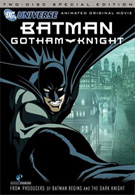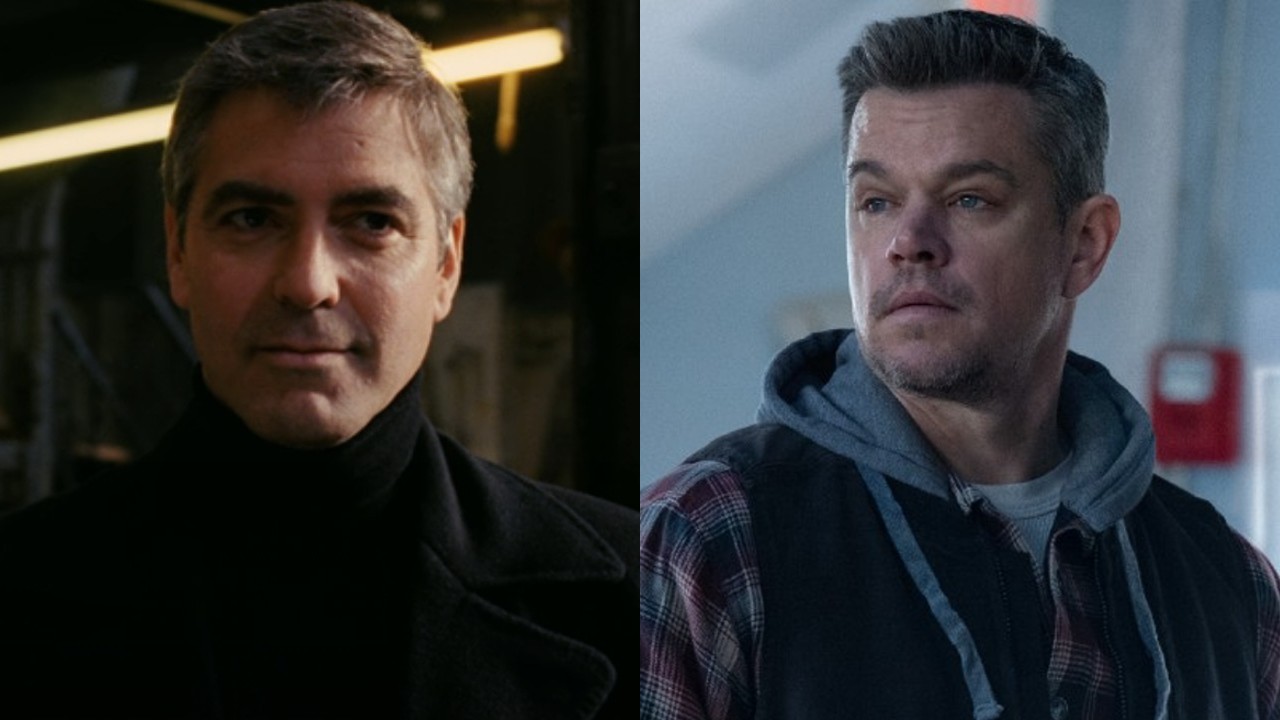Comparing Batman: Gotham Knight to The Animatrix is inevitable. Both projects take existing characters and worlds and allow six different directors, writers, and artists to offer a distinct take on the character. Much like the animated Matrix stories, the tales contained in Gotham Knight vary in quality, but definitely offer something unique for fans of the Bat. There is probably no character in the history of comic books, and specifically comics adapted to other mediums, as open to individual interpretation as Batman. Don’t belive me? Just think of the different versions of Batman that have been committed to film: Adam West’s sillier, multicolored version; Tim Burton’s Gothic hero, flawed as much as his rogues gallery; Joel Shumacher’s nipply super-hero - a sort of combination of the two; and Christopher Nolan’s more realistic version of the character. All of them are viable interpretations on the character and the world he lives in, and have been enjoyed by someone, even if they have insulted others. With such a variety of approaches to the characters, just imagine how diverse the character could be conceived in an animated form.
Well, imagine no longer. Batman: Gotham Knight, brought about by the producers of Batman Begins and The Dark Knight, serves as an example of how six different anime directors would portray Batman and Gotham City. The result is an interesting blend of anime style and one of the comic-book world’s most famous faces. Even as someone who isn’t a huge fan of anime, I appreciate the visual styles of Batman: Gotham Knight… for the most part. There’s a few times the style stops working for me, as I’ll detail more below.
Even though I have to rate Batman: Gotham Knight as a whole, the truth is it’s impossible to consider this release without evaluating each of its individual parts. With that in mind, here’s a closer look at the six different vignettes that make up the whole of Gotham Knight.
The first segment, “Have I Got a Story For You,” is probably one of the most true to the selling point of Batman: Gotham Knight as a bridge between the two Nolan films. With Batman being a relatively new entity in Gotham City, people don’t know what to make of the Dark Knight. This story finds a group of kids gathering together and telling a story about their own encounter with Batman. The story is actually told in reverse order, with each encounter taking place prior to the previous kid’s tale, and the kids’ perceive Batman as anything from a living cloud to a cyborg. It’s a pretty cool tale, but the problem is it resembles one of my favorite episodes of Batman: The Animated Series far too closely. This story was already done well, so why redo it for Gotham Knight? Despite the resemblance, this is one of my favorite vignettes of this DVD.
“Crossfire” is a good follow up to the first story, this time giving an idea of how the police perceive the new arrival of Batman. As you might expect, some are open to the idea, where others see him as a masked vigilante who is operating outside of the law. This short has its roots much more strongly based in an anime style and, like the first one, Batman is a larger than life figure who isn’t physically present as much as the idea of the character is at center stage. This short also helps show how Gotham has changed since Batman Begins, with an entire island being handed over to the asylum to take care of the inmates.
The third story, “Field Test,” is where the animated movie starts to go south for me. The story is pretty true to Batman, with the Dark Knight testing out a new invention from Lucius Fox that gives Batman a kind of bulletproofing. While I like seeing the development of Batman’s gadgets, the story feels like it should go before the previous section (especially because one of the gangsters beaten up in “Crossfire” appears unharmed here). This short also betrays something I was incredibly excited about - the voice of Kevin Conroy as Batman/Bruce Wayne. After years of hearing Conroy voice the animated character, the vocals seem mismatched with the visual anime styling of a very young Bruce Wayne. I love Conroy’s voice, but I almost wish they had gone with a different voice actor, especially for young Bruce.
“In Darkness Dwells” comes from David Goyer, who co-wrote both of Christopher Nolan’s Batman movies. It’s probably the closest connection we’ll ever seen between the Batman comics and Nolan’s movies, as Goyer takes the opportunity to bring in some traditional Batman villains while trying to stick to what he’s done with Nolan in the films. The story finds Batman in confrontation with Killer Croc and subsequently poisoned by some of Scarecrow’s weaponized hallucinogen. This segment starts out with one of the most impressive depictions of Gotham City, giving a lot of promise that is followed up visually by Batman’s hallucinations, but the story itself is a little unbalanced, with Batman still highly capable despite the hallucination we’re shown. It’s almost as if the drugs were just an excuse to give the animators some creative license without it affecting the story directly.
Your Daily Blend of Entertainment News
“Working Through Pain” confused me pretty thoroughly, and is easily the weakest of the stories. It follows the Dark Knight’s return to the sewers after “In Darkness Dwells,” hunting down some of the crazies found there. Batman is wounded, and starts having flashbacks to Bruce Wayne’s time before donning the cowl when he was training, specifically learning how to work through pain. The flashback story is good, but the story winds up with an odd disconnect of the Dark Knight wandering through the sewers of the city collecting handguns for no real reason while Alfred attempts to track him down. While the flashback storyline is cool, the present day story falls apart and makes very little sense by the end of the segment.
Although the middle segments of the series are weaker, the final story, “Deadshot,” makes sure Gotham Knight ends with a bang. Sort of taking a nod from Wanted, the story by Batman legend Alan Burnett builds on the detective side of the Dark Knight, as he attempts to track down an incredibly skilled assassin. Visually, this is the story that’s the most true to what you’d expect to see in a Batman cartoon, but that’s not what drew me to it. If you’re watching the evolution of Batman between the two movies, then this is the closest the character comes to being what we’ve expected over decades of watching the character. It’s a good story and probably the most impressive visually. Mostly, it just feels like a true Batman story and made me wish that it went on a little longer. Batman: Gotham Knight is available as a single-disc DVD, a two-disc collector’s edition, and a Blu-ray release. While this is a release of the two-disc DVD, most of the bonus materials are shared across versions.
All versions of Batman: Gotham Knight include a commentary track from Gregory Novak with D.C. Comics, Denny O’Neal, who wrote and edited Batman comics for some time, and Kevin Conroy, the voice of the animated Batman for some time. The introduction to the commentary says they’re going to do something very non-traditional, but it really is just a normal commentary, only from comic book people instead of movie people. They are still discussing the character and specifically the development over these shorts, with Conroy able to reflect upon his entire career voicing Batman. While the commentary doesn’t really give any hints about The Dark Knight, it does promise some sort of character tie-in with the upcoming sequel, particularly for Detective Anna Ramirez, who some viewers have confused with a different character from the Batman mythos. The highlight of the commentary is a post-9/11 story from Conroy where he describes working in a soup kitchen to help the rescue workers and the reaction they gave when they found out he was the voice of Batman.
All of the releases also include a few videos - trailers for The Dark Knight and Lego Batman: The Game (among others), as well as an extended look at the upcoming DC Animation Wonder Woman movie, starring Keri Russell, Nathan Fillion, Alfred Molina, Virginia Madsen, and Rosario Dawson. The animation of Wonder Woman doesn’t appear to be beyond the pencil stage when his featurette was made, so don’t expect much of a look at how it will look, other than sketches of the new appearance of the title character, which differs somewhat from how Wonder Woman appeared in Justice League.
Onto the material on the two-disc edition, “A Mirror for the Bat: The Evil Denizens of Gotham City” is a half hour look at Batman’s rogues gallery. Since only two of Batman’s famous villains appear in Gotham Knight, this mostly uses artwork from the comic book and footage from the animated series. As a featurette, this is a really good look at the key figures opposite Batman and what they each represent when reflected against the Dark Knight. There’s not much that makes this featurette specific to this DVD release though, which means it might be overlooked by Batman fans who aren’t interested in an anime Batman.
“Batman and Me: A Devotion to Destiny” is also unspecific to Batman: Gotham Knight and is a look instead at Bob Kane, the creator of Batman. Although I’ve been a marginal Batman fan most of my life, I didn’t know much about Kane and I found this a really informative featurette, shedding some light on the man behind the creation of the myth, from his origins (no gunned down parents here), to a brief love affair with Marilyn Monroe, to his reaction to the success of Batman from the comical TV series to the Burton blockbuster movie.
Finally, four episodes of Batman: the Animated Series are included. The idea is that they were picked by producer Bruce Timm for the DVD, although his reasons for selecting these episodes aren’t included. Remember above where I said the first of Gotham Knight’s stories reminded me of an episode of the animated series? Oddly, that’s one of the episodes picked, “Legends of the Dark Knight.” Kind of strange to rip-off the plot device of an episode and then include that episode right here for comparison, but that’s what they’ve done. The other episodes are “Heart of Ice” (featuring Mr. Freeze), “I Am the Night” (good for the Gordon/Batman relationship and the animated story’s take on Bruce Wayne’s parents being killed), and “Over the Edge” (the ultimate Scarecrow episode).
While Batman: Gotham Knight is kind of a mixed bag, particularly to Batman purists who may not care for the anime approach, the second disc in this two-disc set is almost completely made up of material that any Batman fan can enjoy. The whole release may pale in comparison to Christopher Nolan’s live action take on Batman, or the highly successful animated series of the past, but at the very least this is worth a rental and worthy of being a part of any serious Batman collection.

